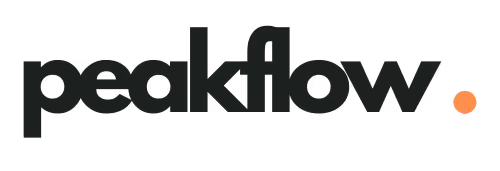New to B2B lead gen. and confused by all the acronyms you see everywhere? We’ve all been there at some point.
It feels like learning a new language. Buzzwords, jargon, and terms you’re not quite sure how, when or where to use.
That’s why we put together this glossary of 75 common B2B lead gen. terms. They're organized by category, with short, simple definitions you can actually understand.

Outreach & Prospecting
1. Cold Email Outreach: Sending personalized emails to new prospects to spark conversations.
2. Warm Outreach: Contacting prospects who’ve already engaged with your brand.
3. Prospecting: Finding new leads that fit your ideal customer profile.
4. Sequences: A planned series of emails or touchpoints designed to nurture a prospect.
5. Cadence: The rhythm or timing of your outreach steps (e.g., email, LinkedIn, call).
6. Personalization: Tailoring your message to the individual prospect.
7. Signal-Based Outreach: Using intent or behavior signals (job changes, funding rounds) to time outreach.
8. Reply Rate: The percentage of prospects who respond to your outreach.
9. Open Rate: The percentage of people who open your emails.
10. Click-Through Rate (CTR): The percentage of people who click a link in your email.

Lead Generation & Qualification
11. Lead Generation: Attracting people or companies interested in your product.
12. LinkedIn Lead Generation: Using LinkedIn for connection requests, messaging, and nurturing.
13. Inbound Leads: Prospects who come to you through content, SEO, or ads.
14. Outbound Leads: Prospects you reach out to via email, LinkedIn, or calls.
15. MQL (Marketing Qualified Lead): A lead showing interest, usually through marketing actions.
16. SQL (Sales Qualified Lead): A lead vetted by sales and ready for direct outreach.
17. SAL (Sales Accepted Lead): The stage when sales officially takes over a marketing lead.
18. ICP (Ideal Customer Profile): A description of the type of company that’s your best fit.
19. Buyer Persona: A semi-fictional profile of your ideal buyer, including role, pain points, and goals.
20. Lead Scoring: Ranking leads based on how likely they are to convert.

Appointments & Pipeline
21. Appointment Setting: Booking calls with decision-makers to advance deals.
22. Pipeline: A visual of all opportunities in your sales process.
23. Conversion Rate: The percentage of leads that move forward in the funnel.
24. Show Rate: How many booked meetings actually happen.
25. No-Show: When a prospect misses a booked call.
26. Close Rate: The percentage of deals that end in a signed contract.
27. Sales Cycle: The time it takes to move from first contact to closed deal.
28. Forecasting: Predicting future revenue based on your pipeline.
29. Opportunity: A potential deal recognized by sales.
30. Deal Stage: A milestone in the sales process (demo booked, proposal sent, contract out).

Marketing & Demand Creation
31. Content Marketing: Creating blogs, guides, or videos that attract and convert prospects.
32. Demand Generation: Creating awareness and interest in your solution.
33. ABM (Account-Based Marketing): A targeted growth strategy focused on winning high-value accounts.
34. TOFU (Top of Funnel): Early awareness stage where prospects first discover you.
35. MOFU (Middle of Funnel): The consideration stage where prospects evaluate options.
36. BOFU (Bottom of Funnel): The decision stage where deals close.
37. CTA (Call to Action): A prompt that encourages the next step (e.g., “Book a demo”).
38. Landing Page: A dedicated webpage designed to capture leads.
39. Gated Content: Resources like eBooks that require contact info to access.
40. Retargeting: Ads shown to people who previously visited your site.

Data & Technology
41. CRM (Customer Relationship Management): Software for managing contacts, leads, and deals.
42. Intent Data: Information showing buying signals, like searches or content engagement.
43. Enrichment: Adding more data to a lead (company size, revenue, tech stack).
44. List Building: Creating a list of target prospects to contact.
45. Data Scraping: Extracting information from websites.
46. Verification: Checking if an email address is valid.
47. Bounce Rate (Email): Percentage of emails that fail to deliver.
48. Deliverability: The ability of your emails to reach the inbox.
49. Domain Warm-Up: Gradually increasing email volume to build sender reputation.
50. Tracking Pixel: A tiny code snippet that tracks opens and clicks.

Sales Roles & Teams
51. SDR (Sales Development Representative): Focuses on outbound prospecting.
52. BDR (Business Development Representative): Similar to SDR but often includes inbound follow-up.
53. AE (Account Executive): Sales rep responsible for closing deals.
54. CSM (Customer Success Manager): Guides customers to success post-sale.
55. RevOps (Revenue Operations): Aligns marketing, sales, and success teams.
56. Lead Handoff: Transitioning a lead from marketing to sales.
57. Sales Playbook: A documented process for reps to follow.
58. Quota: Sales target assigned to a rep.
59. Territory: A defined segment of the market assigned to a rep.
60. Comp Plan: How sales reps are paid (base + commission).

Metrics & KPIs
61. CAC (Customer Acquisition Cost): The cost of acquiring one new customer.
62. LTV (Lifetime Value): Total revenue a customer brings during their relationship with you.
63. Churn Rate: The percentage of customers who stop using your service.
64. ARPU (Average Revenue Per User): The average revenue per customer.
65. Win Rate: The percentage of opportunities that become closed deals.
66. Funnel Conversion: The percentage of prospects moving from one funnel stage to the next.
67. Engagement Rate: How often prospects interact with your emails, posts, or content.
68. SQL to Close Rate: The percentage of SQLs that close into deals.
69. Time to First Contact: How quickly sales reaches out to a new lead.
70. Response Time: Average time it takes your team to reply to inquiries.

Strategy & Tactics
71. Multi-Channel Outreach: Using a mix of email, LinkedIn, calls, and ads.
72. Nurturing: Building relationships with leads over time until they’re ready to buy.
73. Play (Sales Play): A repeatable strategy for reaching and converting leads.
74. Qualification Framework: A system like BANT or MEDDIC to qualify leads.
75. Go-To-Market (GTM): The overall strategy for how you bring your product to market.
You’d rather spend time closing deals instead of decoding jargon?
In that case, let us handle the rest – from outreach, LinkedIn lead generation, buyer-led appointment setting, content marketing, demand gen, and ABM – so you can keep your focus where it matters most: revenue.

.svg.svg)




.avif)

.avif)
.avif)